The View from the Hill
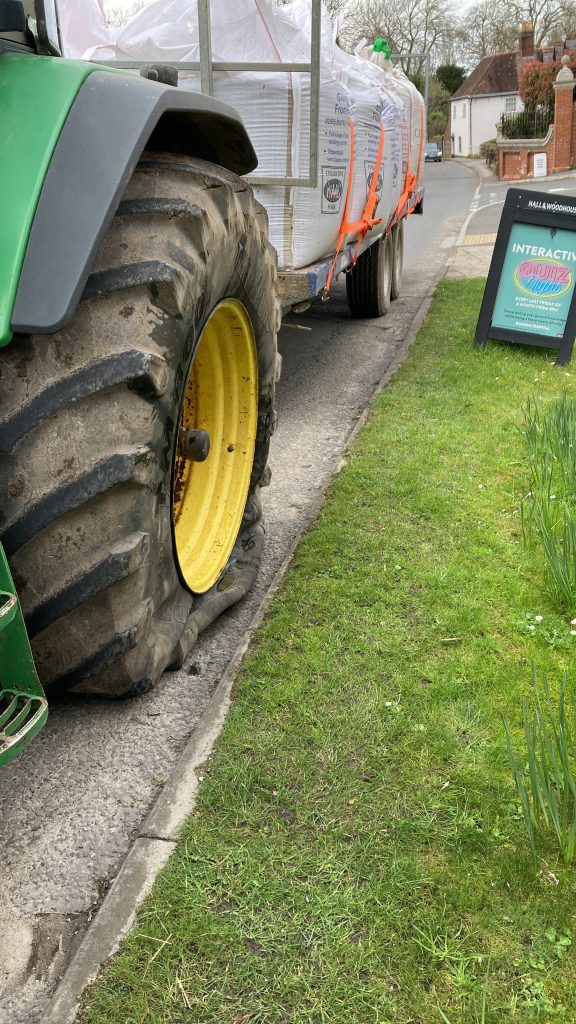
Not really what you need when towing a 10 ton load of seed through town, right outside the Hall and Woodhouse brewery in fact, during a short break in the weather, sufficient to sow around 60ha of our 220ha spring sowing programme. Pat from Blandford Tyres was on the scene very quickly and we managed to get the tyre blown up, the trailer unhitched and the tractor into the brewery car park for a proper repair to be made. (An old factory repair on the previously tubeless tyre had given out, so Pat had to put in a £150 tube.) Brendan came to the rescue with another tractor and took the seed trailer on to the drill, and we got the barley sown by the skin of our teeth before it rained again, but the soil was too wet to roll, like every other field this spring, and half the autumn sown crops too.
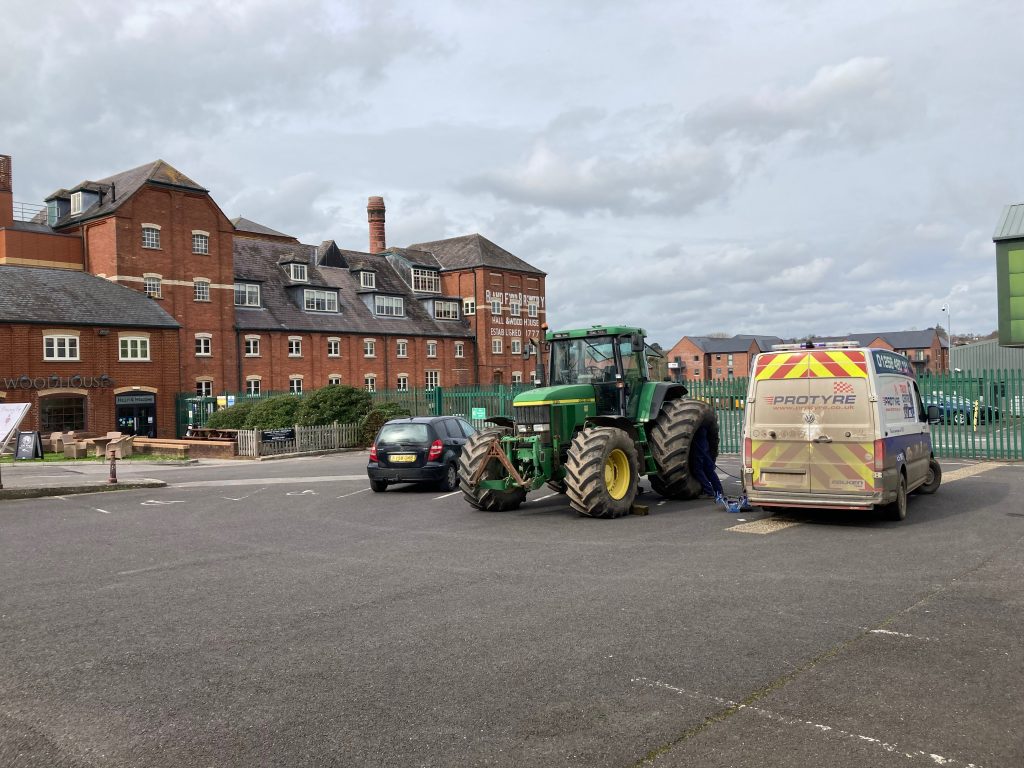
Before I wallow too indulgently in self-pity I’d better put in a word for the farmers who farm land a good deal wetter than ours. Our chalk based soils drain quite quickly compared to the heavier clays on which much of the country depends for its food. Countless thousands of hectares of winter crops have been under water for many months in some parts of the country, and of course the crops will have been destroyed with precious little chance of the soil drying out in time to sow a viable crop this spring as the rain has continued almost without relief until mid April. A great many of those fields will need more than a year to recover their productivity, one option would be to plant a summer fallow of mixed flowering species, and hope for an opportunity to sow a crop in the autumn, otherwise leave well alone until spring next year, but who knows how much it will rain next winter? The financial consequences of all this are eye-watering.
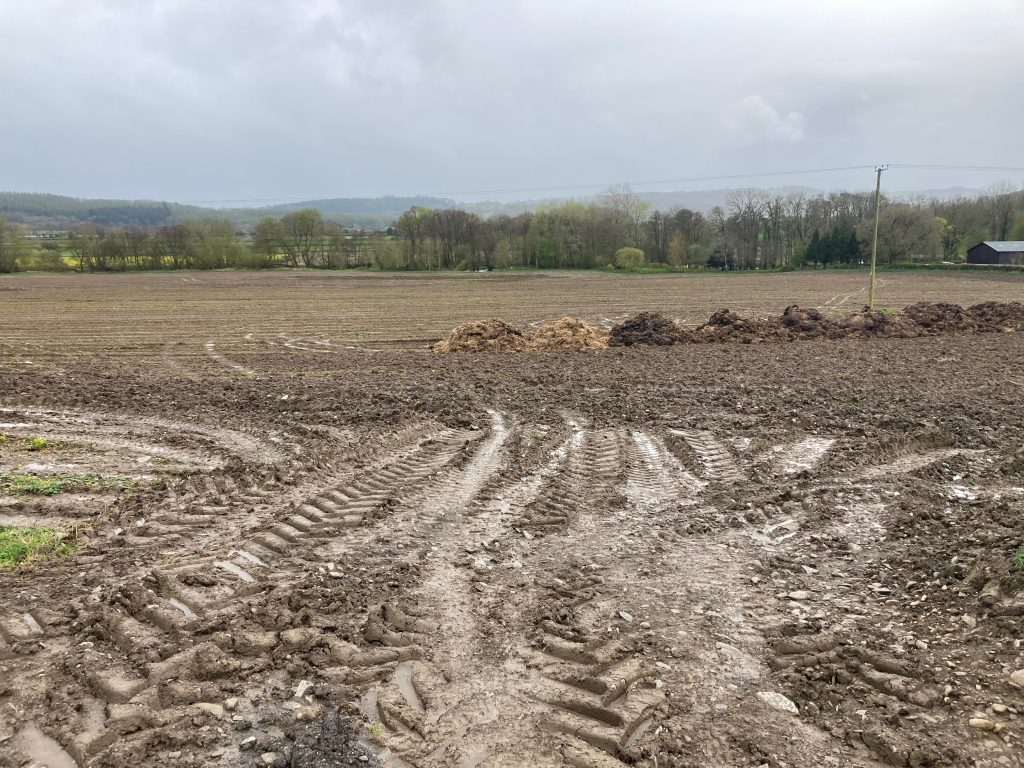
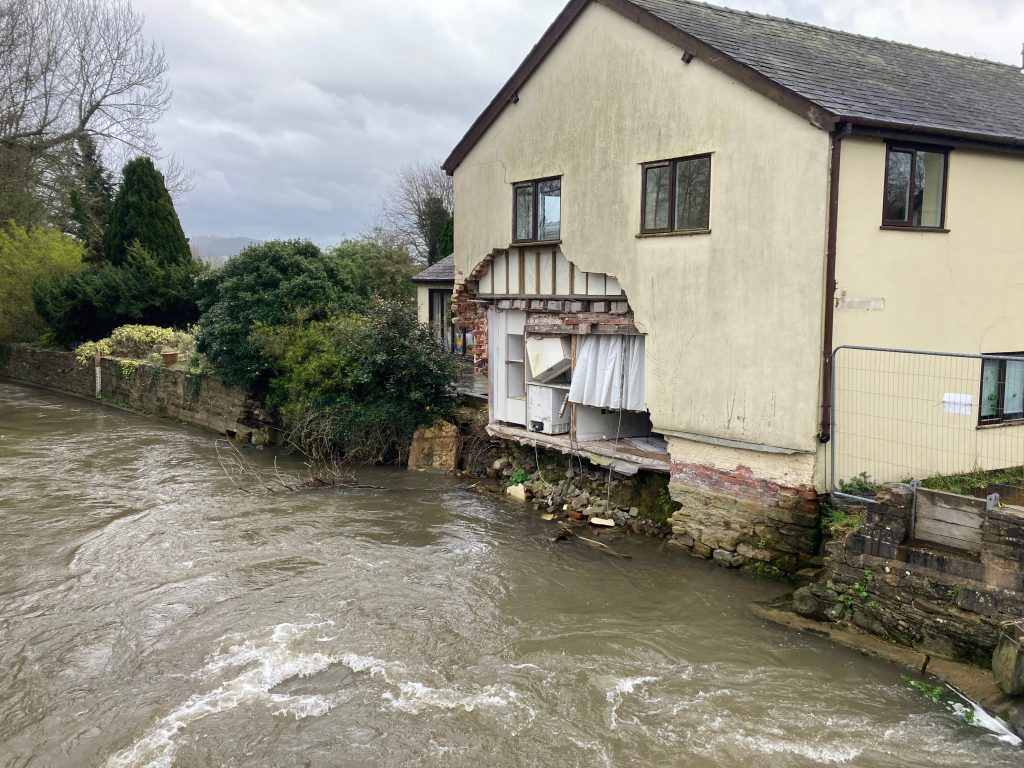
A week in Herefordshire recently showed how bad things can look, every river brim full or overflowing, and so many fields under water or with water sitting on top of the soil. This particular erosion was on the River Lugg, not far from the infamous spot where a farmer with a digger was jailed for causing damage to the river bank. There were also many sheep with young lambs looking utterly miserable with little to eat. I really don’t understand why so many farmers persist in lambing their sheep so early, when there is little grass and miserable weather most years. The sight below should be a huge embarrassment to the farmer responsible.
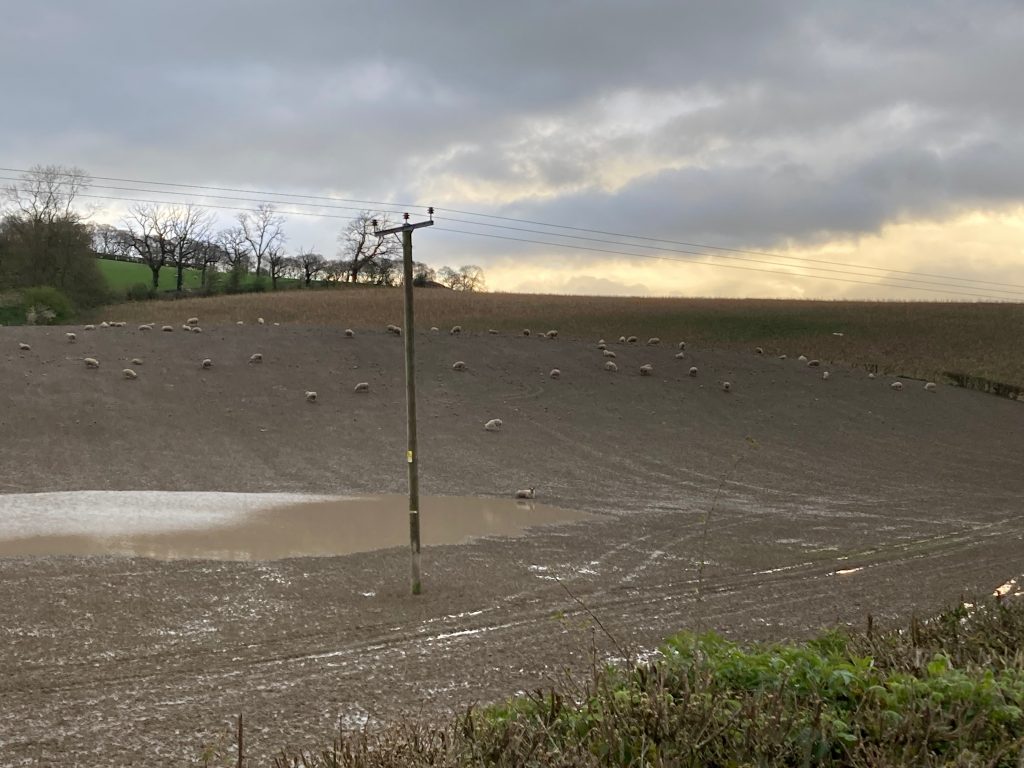
For the nerds, our 7 month winter rainfall (Sept-March) exceeded the amount that normally falls in a whole year. (1090mm v 1040mm). Our soils are still very moist, and as the crops emerge, which we managed to finish sowing on Saturday 13th April, several weeks later than the optimum, we are trying to get them rolled, to push stones in and reduce slug grazing.
Moving on from the horror and stress of the weather and trying to get crops sown, our cows have been pumping calves out steadily for the last few weeks, all of our 60 cows have now calved, and as of just last week are enjoying fresh grass outside. We couldn’t risk them going out earlier and turning fields to mud before enough grass has grown to sustain them. The tiny flock of ewes are not due to lamb, until mid May, just in time to entertain a number of school visits booked for this term.
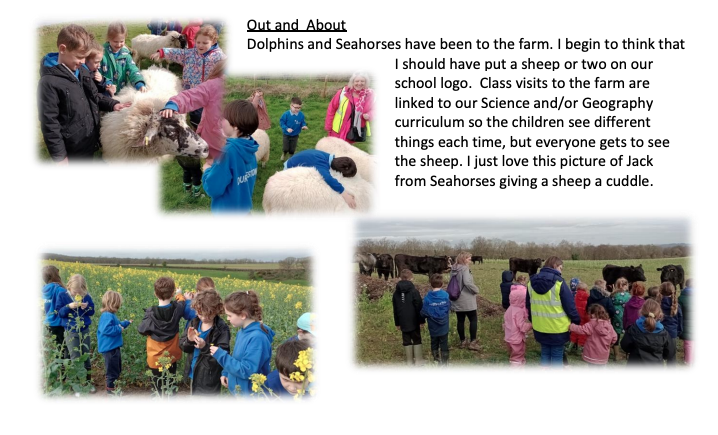
Several Durweston Primary classes visited the farm last term, and it’s great to see them feature in the school newsletter, the lad hugging the sheep is a classic pic, the ewes were so fluffy, their wool is so clean after all the rain, and luckily on this occasion they were lovely and dry. The school logo already has a significant agricultural influence…….

Our mid Stour Valley Cluster group has met several times over the winter, in January we enjoyed a technical session with soil specialist from Devon, Andrew Sincock. He talked muck, soil, cover crops and compost, and then we trudged out into a damp field to look at grazed cover crop and then some very cold and wet looking compost windrows. Andrew had shown us a curious graph which is supposed to tell us all we need to know in order to get compost right. If you can understand this you are cleverer than me.
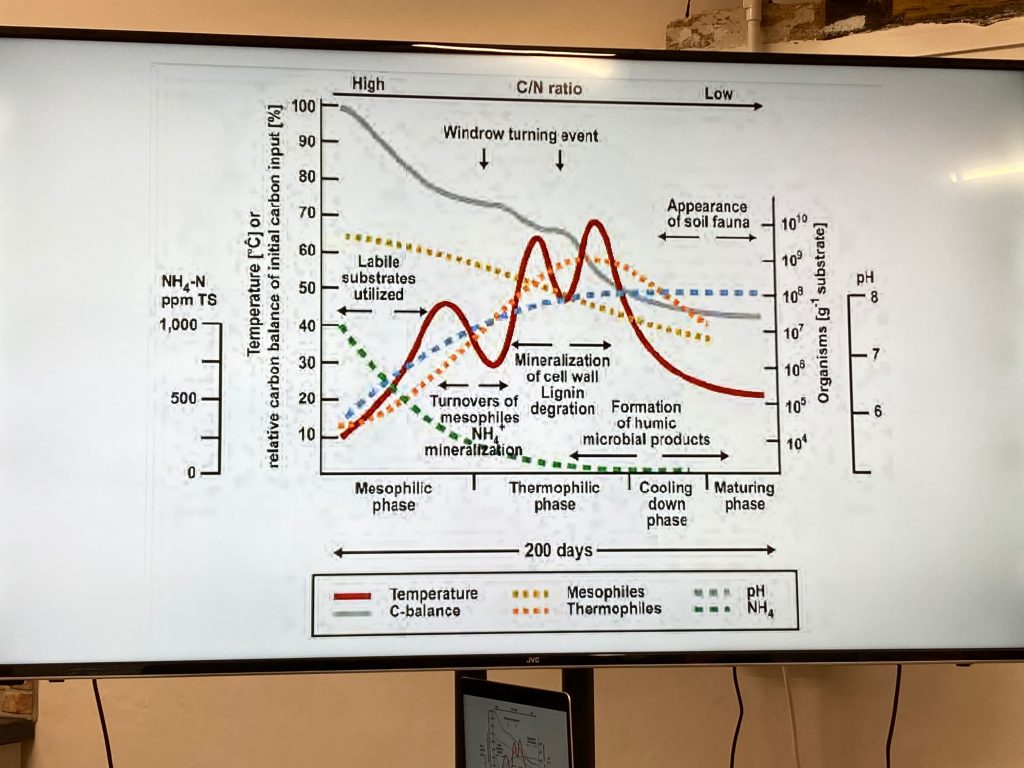
Our own composting efforts had worked well earlier last year, we made and spread all the muck-based batches successfully before sowing this winter’s cover crops, but the compost rows that were only built in the autumn, using straw, horse manure, and material cut from our flower margins, didn’t contain enough nitrogen to get the composting process going before winter. We are about to liven up the windrows with fresh muck from the cow shed, then get the turner going to start it up again. We need it to reach 70 degrees temperature, to kill weed seeds and to encourage the right kind of organisms in the compost.
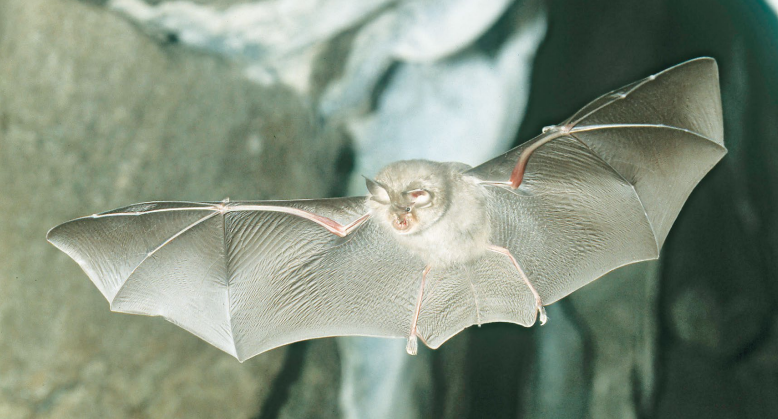
A couple of weeks ago Claire our cluster group leader organised a bat walk, led by Jim Mulholland of the Vincent Wildlife Trust. He gave us a fascinating talk with slides to begin with, focussing on the Greater Horseshoe bat which has a colony containing around 500 bats very local to the farm. We learnt many years ago that our land was highly likely to be providing foraging habitat for this endangered species, and we, as well as neighbouring farms, were encouraged by the Vincent Trust to manage our hedges to benefit the bats, and to refrain from using Ivermectin wormers on our cattle, this family of medicines kill the flies and beetles that feed on and live in cowpats, and which at the same time provide an essential food source for bats and many other species. From a low of just 2,200 individuals 30 years ago, the greater horseshoe bat UK population is now said to number around 10,000, thanks not least to the Vincent Trust, which has spent huge amounts of money purchasing buildings used as roosts, and then adapting them to suit bat requirements as closely as possible.
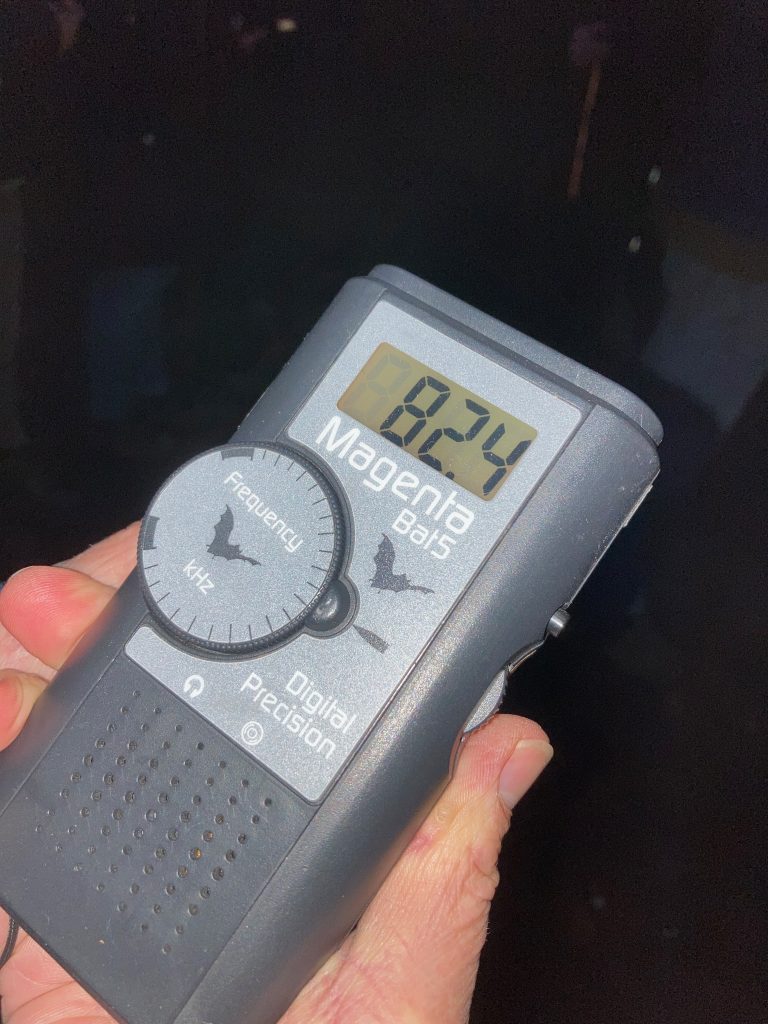
Jim took us to the roost, gave us bat detectors and encouraged us to stand quietly, watching the sky and listening for the GH bat’s unmistakeable sonar-like noise. Normally undetectable by the human ear, through the detectors they sound a bit like the Clangers, with a rising pitch phrase of 5 or 6 blips. The sound of approaching bats on the detectors made us look upwards to be treated to swoops of individuals leaving or returning to the roost, with the bats silhouetted against the dusky sky the combination of sound and vision was captivating. This link takes you to a leaflet about the GH bat, with some great pictures.
https://www.vwt.org.uk/wp-content/uploads/2015/04/horseshoe-bat-leaflet.pdf
Interesting fact of the week; apparently the weight of all the creatures generated from the manure produced by a cow in a year is equivalent to 20% of the weight of the animal.
And a second one for good measure; the mites carried by dung beetles hop on and off the beetles as they travel from cowpat to cowpat, they spend much of their time consuming the fly eggs they find in the dung, therefore a good healthy cow pat which does not contain the residue of the most powerful wormers, can itself reduce the number of flies that it might well otherwise have produced. https://www.dungbeetlesforfarmers.co.uk/what-is-in-dung
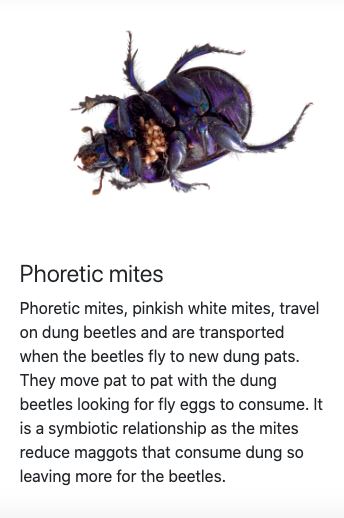
For those keen to explore this subject further, here is an article (from which much of the last paragraph was borrowed), by Prof Ian Newton, who is described by my naturalist farmer friend Martin as our greatest ever ornithologist.
And finally for this episode, a developing situation is causing concern in various quarters in the county. Nutrient Neutrality is one feature of the Environment Act of 2021, the basic principles of which are enshrined in the act’s Environmental Principles Policy Statement. The five environmental principles set out in the act are:
- the integration principle (that environmental protection be integrated into the making of policies);
- the prevention principle;
- the precautionary principle;
- the rectification of environmental damage at source principle; and
- the polluter pays principle
All of which make plenty of sense. But start digging deeper and it gets complicated.
The nutrient neutrality bit is where developers of new housing or commercial property on green field sites, have to lodge large sums of money with the local authority, or Natural England, which allegedly enables them to offset the likely future pollution produced from those new sites, and thus be awarded planning permission for the development. The six million dollar question is what happens to that money ? Well in two cases here in Dorset, the Dorset Wildlife Trust appears to have got its hands on some of it, and has used it to buy two farms, in order to rewild them. Now whatever you may think of rewilding, and I would need to write another 2000 words to do it justice here, my question is does the spending of let’s say £12 million for the two farms (total approx. 1000 acres) represent good value for public money ? The Trust will rewild 1000 acres (400 hectares) , which frankly will make little difference to the overall environmental condition of the Poole Harbour catchment (80,000ha) in which both farms sit, and where the Environment Agency (EA) has for the last five years been trying to persuade farmers to rein back on their nitrogen usage and manure production, in order to significantly reduce the amount of nitrogen reaching Poole harbour. The harbour is a globally important area for wildlife, and excessive nitrogen causes algal blooms which can starve the water of oxygen, and consequently seriously harm water dwelling species. So far the EA has worked with a large number of farmers in the catchment, and they have formed the Poole Harbour Nutrient Management Scheme, however it has become mired in difficulty due to the EA’s inability to devise an effective computer model that farmers can use to calculate their N leaching risk. (The now infamous nitrate leaching tool). The EA claims to be strapped for cash, and hence does not have the resources to invest in a programme sophisticated enough to provide the information required. It strikes me that this is exactly the kind of thing that the Nutrient neutrality money should be spent on, it could have a hugely beneficial effect through persuading farmers to reduce their riskier activities, over a very wide area, not just the 400ha that DWT are trumpeting as a huge environmental gain. Cynics might say vanity project.
£12 million could go a very long way in persuading farmers over a very wide area to farm in a more environmentally friendly way. In a nutshell, it’s land sparing versus land sharing, and I know which I favour.
If anyone can shed further light on what happens to NN money in different areas of the country, please feel free to illuminate those like me who find it all a bit mysterious right now, in the comment box below
From DWT’s website:
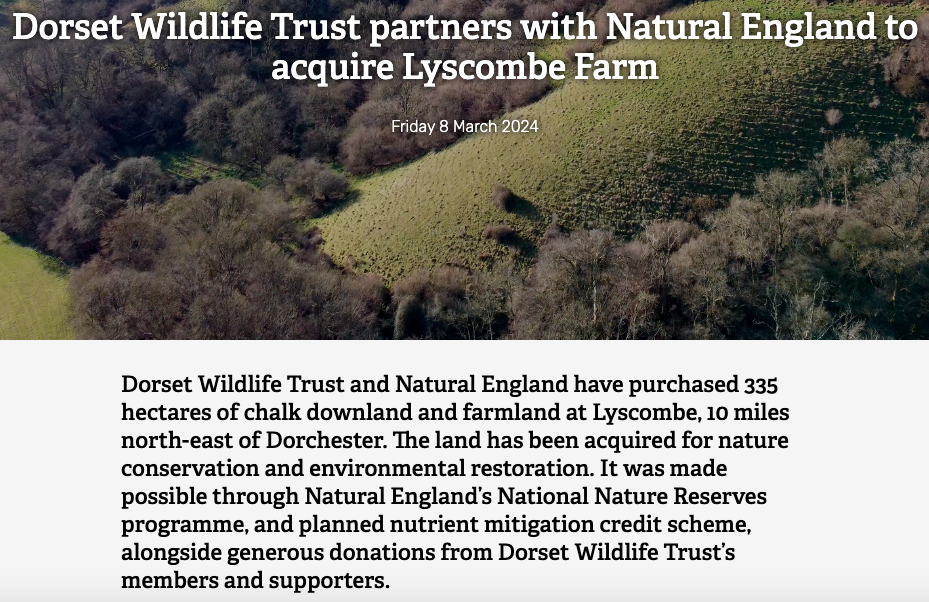
“We are delighted to be partnering with Dorset Wildlife Trust and others in this significant project which has the potential to substantially boost nature’s recovery in this part of Dorset. This is a great example of thinking creatively and bringing partners and different types of funding together. A large proportion of the funding is from Natural England’s nutrient mitigation scheme, meaning this work will offset the nutrient impact of much needed housing elsewhere in the Poole harbour catchment. While crucially playing its part in creating a beautiful landscape for people to come and enjoy for many years to come.”
Rachel Williams, Deputy Director – Natural England
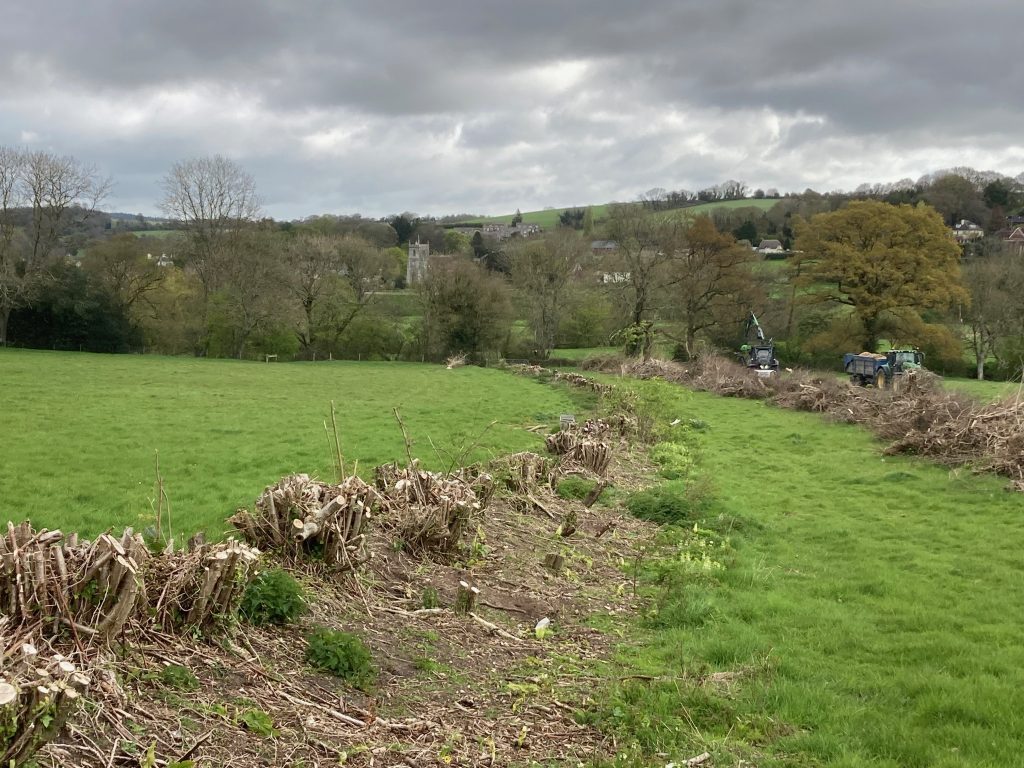
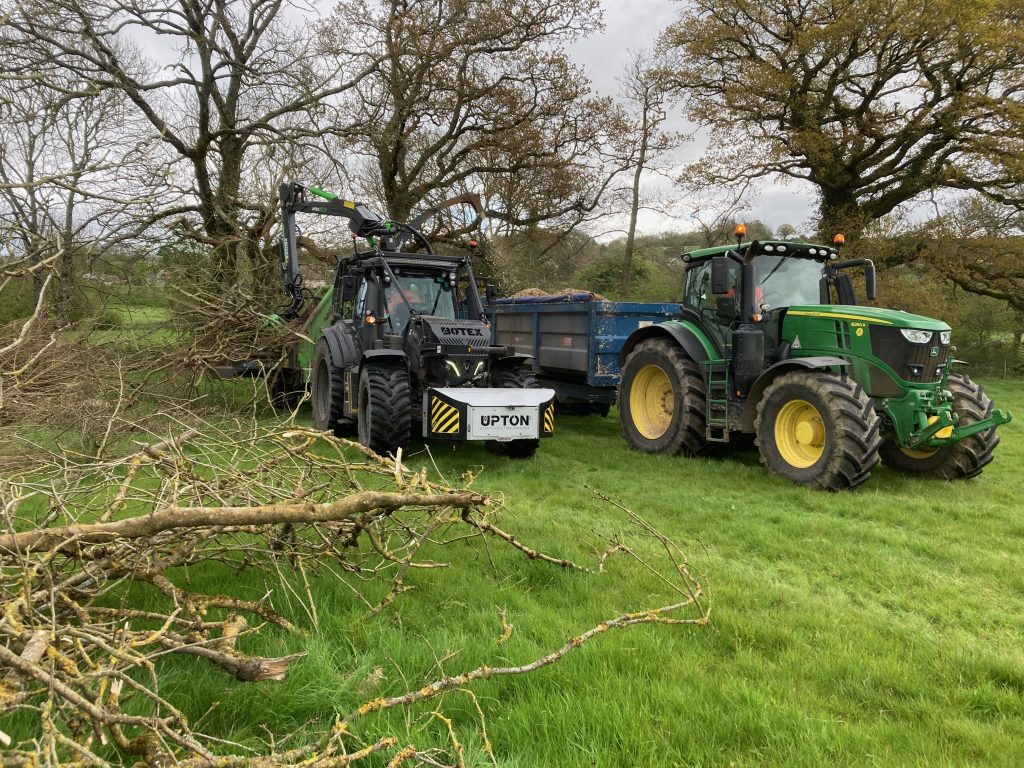
We have done a bit more hedge coppicing this winter, admittedly it looks pretty drastic, but by the time we have filled in the gaps, and the stumps have sprouted new growth, we will end up with a much healthier hedge, with a thick bottom and lots of growth which can provide shelter for nests and fledglings. We hired a man and machine for the day to chip up all the brush wood, the chipper is huge and can munch it up faster than the operator can feed it with his long armed grab. We will use the wood chip in the cow shed next winter, to give the straw bedding a good base, and to mulch new hedge and trees around the farm. Fencing it in is now high on the list of ongoing work, to prevent deer and our livestock eating the new growth. Gary has been down there this week getting posts knocked in with Brendan, and will get the wire up in no time with our fencing machine and electric staple gun, (see last issue).
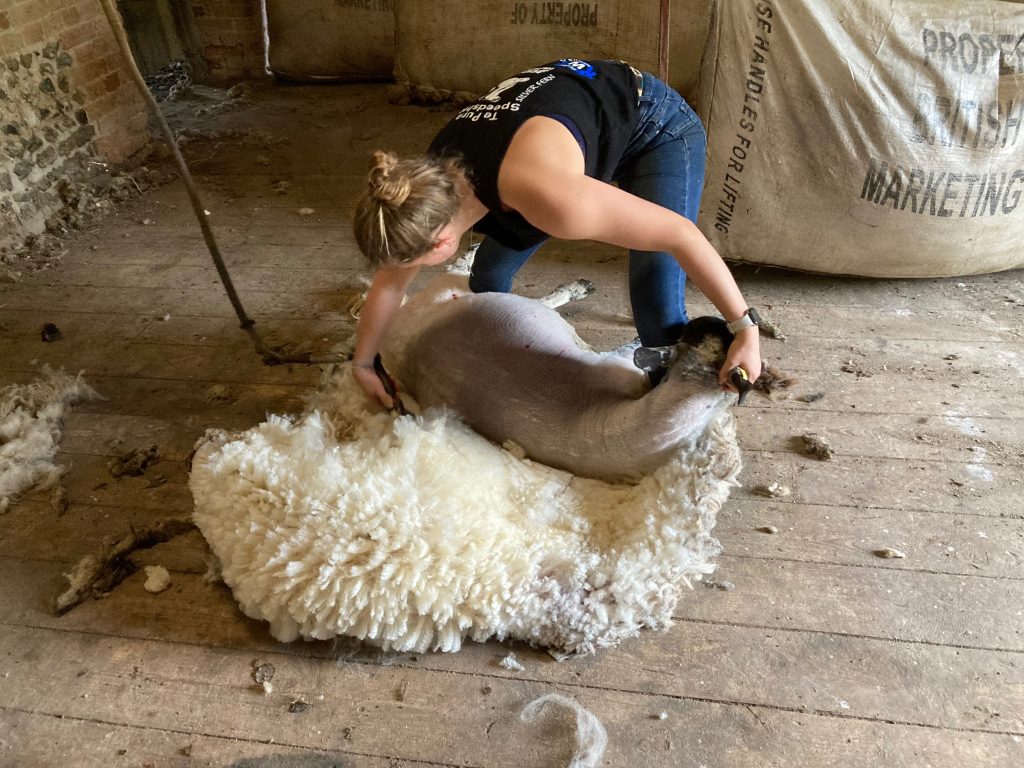
It’s time to get the wool off the ewes, a couple of weeks before they lamb. Newly learnt lessons with a Kiwi shearing gang have meant the shearing can be done in house once again.
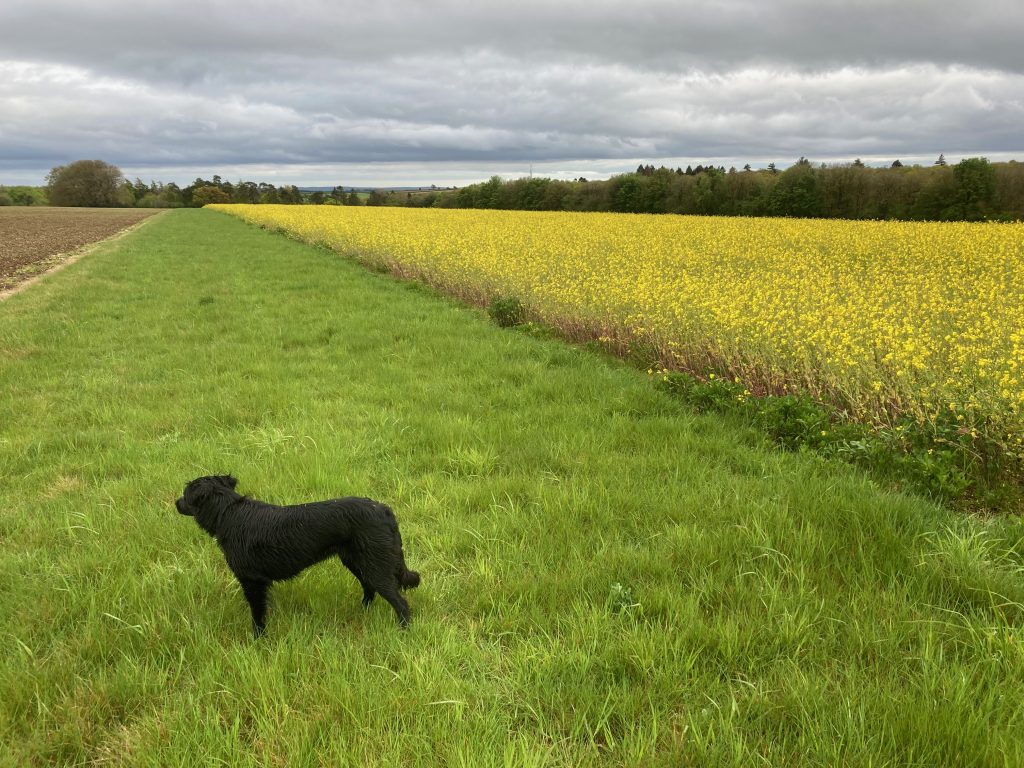
Turnip seed coming along nicely for next winter’s cover crops, along with phacelia, clover, linseed and radish, with a few more about to be sown, such as buckwheat, vetch and camelina.
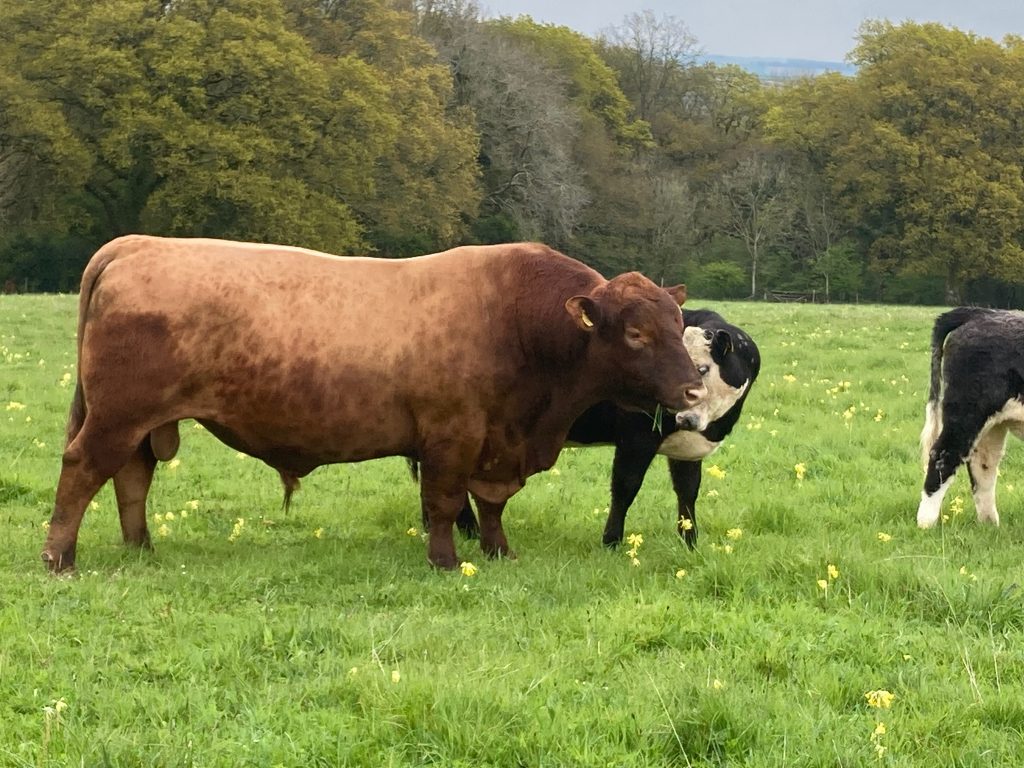
Mr Red enjoying the company of 11 heifers, replacements for the herd for next year, and the cowslips.

Great to see Ian Newton make it into the View. He would be tickled pink (Which I suppose is what Mr Red does to your heifers)
Always good to have an excuse when your tractor is parked for a long time at the brewery
Particularly good missive this month! So good to see the involvement with the local schools and the access you give to the farm. We seem to have lost the link between agriculture and the wider population which in turn introduces a level of misunderstanding. It requires this to be bridged and it’s so good to see you working so hard to do this.
Thank you for posting again. I was beginning to worry that you had given up your fascinating blogs. I live in London and your blogs help me to understand the complexities of managing a large farm in as sustainable a way as possible. I also admire your seemingly boundless energy.
On environmental management, I can see that buying land to rewild would be easier to promote as a good use of the money compared to spending on a computer model, where getting buy in even from users can be a problem for many reasons. I agree that the latter would be preferable though.
Re-wilding has become another of those emotive and misleading terms. From what I have read Knapp Estate (Treen) is not wild but managed for eco-tourism. Re-wilded or nature reserve – is there a difference? I I can feel Dorset Wildlife’s frustration and if at least one of the farms was managed as a model for food productive but minimal nitrogen / phosphate run off I could see a role for public money. If Dorset gains another nature reserve that educates the populace in the complexities of nature vs (cheap) food then that too could be considered an appropriate use of public money.
“Gary has been down there last week knocking posts in with Brendan….”. I used to use a sledge hammer but progress is progress I guess!
Brilliant again George. Thank you for the usual good read.
As one of those rainfall nerds, however, I would be interested to see what the gauge on “The Hill” measured over the September – March periods for winters 00/01 and 76/77. My records tell me that rain in both of those winters exceeded the winter we have just had. Mind you, our Dorset experience this time round is, for sure, not as extreme as that of some counties to our north. So we remain lucky in many respects but not, it seems, with regard to nutrient neutrality, that wonderfully knotty subject.
Hi again George and thanks for another excellent read. Fascinated by your C/N stories this month. On the one hand compost, where presumably the wish, besides the general structural advantages of organic matter in soil, is to retain as much nitrogen as possible to the benefit of eventual plant growth; on the other hand Poole Harbour / algal bloom and the threat from leaching nitrogen. I was intrigued because, as a now-non-farmer but with a modest garden pond I have just renewed my understanding of the use of either hay or barley straw to encourage the growth of bacteria which utilise ammonia (fish excreta) and thereby reduce the concentration of this toxic nitrogenous compound in water. The ‘intrigued’ bit is the fact of so much real or potential hay or barley straw on farms; maybe some could be beneficially introduced somewhere to combat this pollution? The bit I didn’t know but discovered when wondering how to sort my pond out (algal bloom), is the potential for molasses to be used as a food / carbon source for the above-mentioned ammonia-removing bacteria. Bottom line, whether I am right or wrong about my understanding of compost or ponds or Poole Harbour, the Carbon/Nitrogen relationship as it applies across the inputs and outputs of agriculture sounds like a potential rich seam for further investigation.